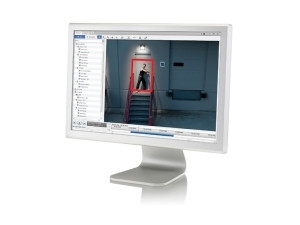Cape Town, 02 Sep 2015

Video surveillance systems have migrated from analogue-based cameras and encoders to IT-centric IP-based cameras, recorders and networks. More IP video solutions are deployed today than analogue solutions, especially for medium to larger-scale projects.
How does this change in technology influence the industry of video surveillance and the people responsible for using, designing, installing, integrating and maintaining these systems into the future?
How does the shift in video surveillance from an analogue world to an IP world impact the chief information officers (CIOs) and their organisations?
We asked Pieter Smuts, GM of the FS-Systems Johannesburg division, to elaborate on this subject.
Q1: How does an analogue video surveillance system differ from an IP video surveillance system?
Remember the old VCR tapes we used to watch the latest movie, or to record the game on TV? VCR-based analogue surveillance systems were the very first way to record footage on a closed circuit television system.
In the mid-1990s, VCRs were gradually replaced by digital video recorders (DVRs), still recording views received from analogue cameras at rather low resolution and image quality. We have now reached a point where more IP video solutions are deployed than analogue solutions. Some experts indicate this tipping point already occurred in 2011.
Today's network-based video surveillance solutions offer end-to-end IP-based systems with advanced functionality. Network-based IP cameras mostly range from one megapixel to 30 megapixel cameras and are available in a variety of form factors suitable to different environments and scene types. These cameras are in essence "small computers" fitted with lenses, image sensors, processors and Ethernet connectors, converting video signals into data to stream across an IP network. This IP network would typically consist of data cable, network field switches (POE), server-based network video recorders, core switches and PC-based operator workstations. Video signals are recorded as data, while managed and viewed with elaborate video management software (VMS).
The IP video surveillance therefore forms part of the bigger IT and networking ecosystem, and has a strong tie-in with the CIOs and their organisations.
In the past, a CCTV technician with a strong electronics background would be responsible for the design, installation, end-user support and maintenance of the analogue system.
Today's CCTV engineers are best equipped with an IT networking and software background. As the entire surveillance system consists of mainly IT components and software, completely different skill sets apply to extract the best value from the modern surveillance system. With much better image quality, functionality, ease of use, software and events-based searching capabilities, HD IP video surveillance systems are no longer only used to mitigate security and safety risks. Operations managers in different industries now use surveillance systems to assist with performance and resource management, productivity improvement and specialised audits, relevant to their functional departments.
IT departments of medium to larger-sized organisations have been in existence longer than IP video surveillance. Over the years, CIOs have developed sound protocols, network security processes and parameters to successfully design and manage the health of IT systems.
The surveillance system requires similar operational, security and functional processes in place, as those of the wider IT and networking ecosystem. In large organisations, these processes usually fall under the domain of the CIO.
Although security and operations specialists best know the functionality of the surveillance system required to do the job, the CIO and his team may be best geared to select the performance criteria on how to deliver on the operational requirements and how to keep the system in top performing shape.
Q4: What new developments can be predicted within the IP video surveillance industry in the future?
As most IP video surveillance systems have a life expectancy exceeding seven years, it is important to consider what the camera you install today can do for you tomorrow.
Video analytics and APIs in all forms and fashions are significantly changing the way we interact with video data.
Nobody knows what the future will bring in terms of video analytics in much the same way you did not know five years ago what your favourite app will be on the smartphone you use today.
Install an IP camera today that will bring you the following benefits tomorrow:
* Self-learning analytics that could trigger multiple alerts and actions;
* Real-time alerts relevant to people and vehicles, searchable reactively;
* Logic-based alerts to notify you of pre-set risk conditions;
* Analytics driven by intelligent combinations of events and clear visual records; and
* Reporting on manifestations that may influence operational choices.
In the next few years, IP surveillance cameras may very well be assigned an operational job description in addition to a camera name.
This job description could include standard security observations and responses; it could include alarms and triggers valuable to operational managers and marketers; it could include reporting functions on resources and staff performance; as well as reports on customer behaviour.
FS-Systems invite you to contact one of its experts to help you make an informed decisions on your next HD IP video surveillance solution.
Watch this AVIGILON product demo video featured at IFSEC 2015, including the 7K HD Pro, to see the quality of products FS-Systems works with.
[VIDEO=fJWm39e24Ig]
Share